
The product of following reaction is

A.
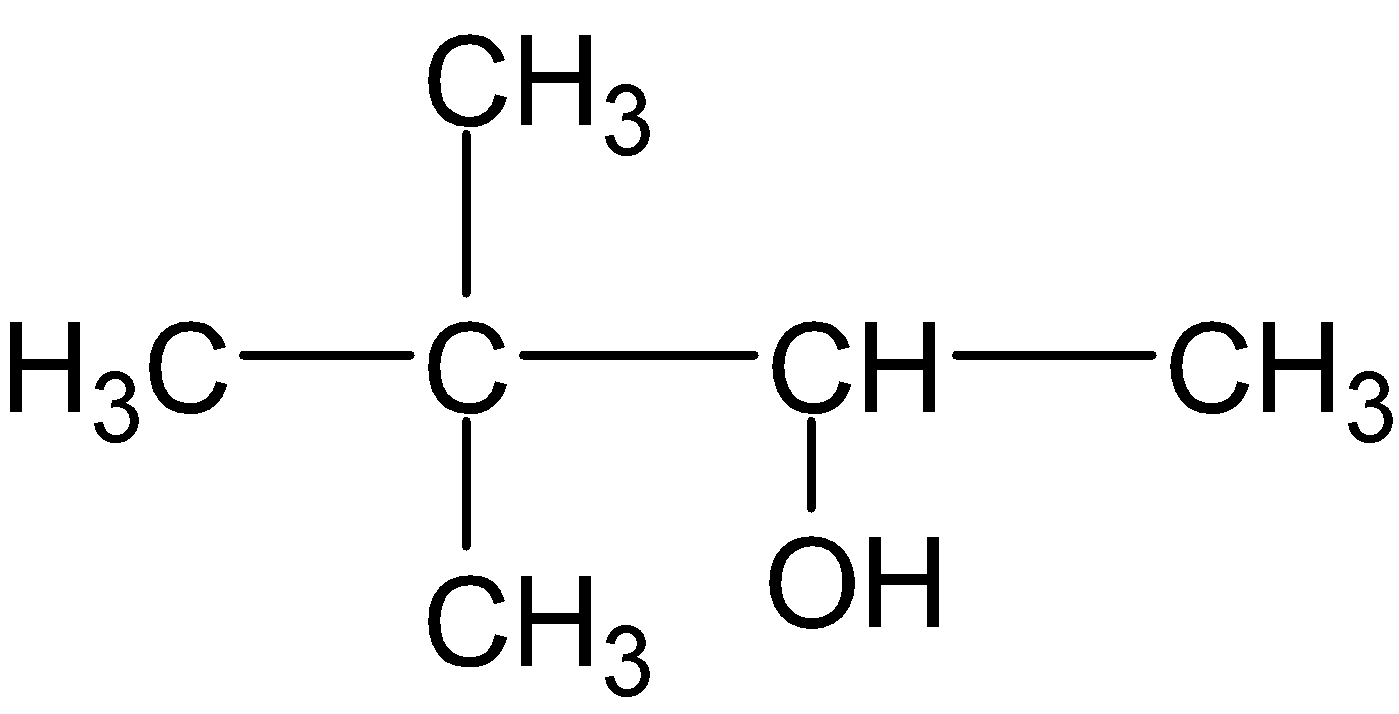
B.
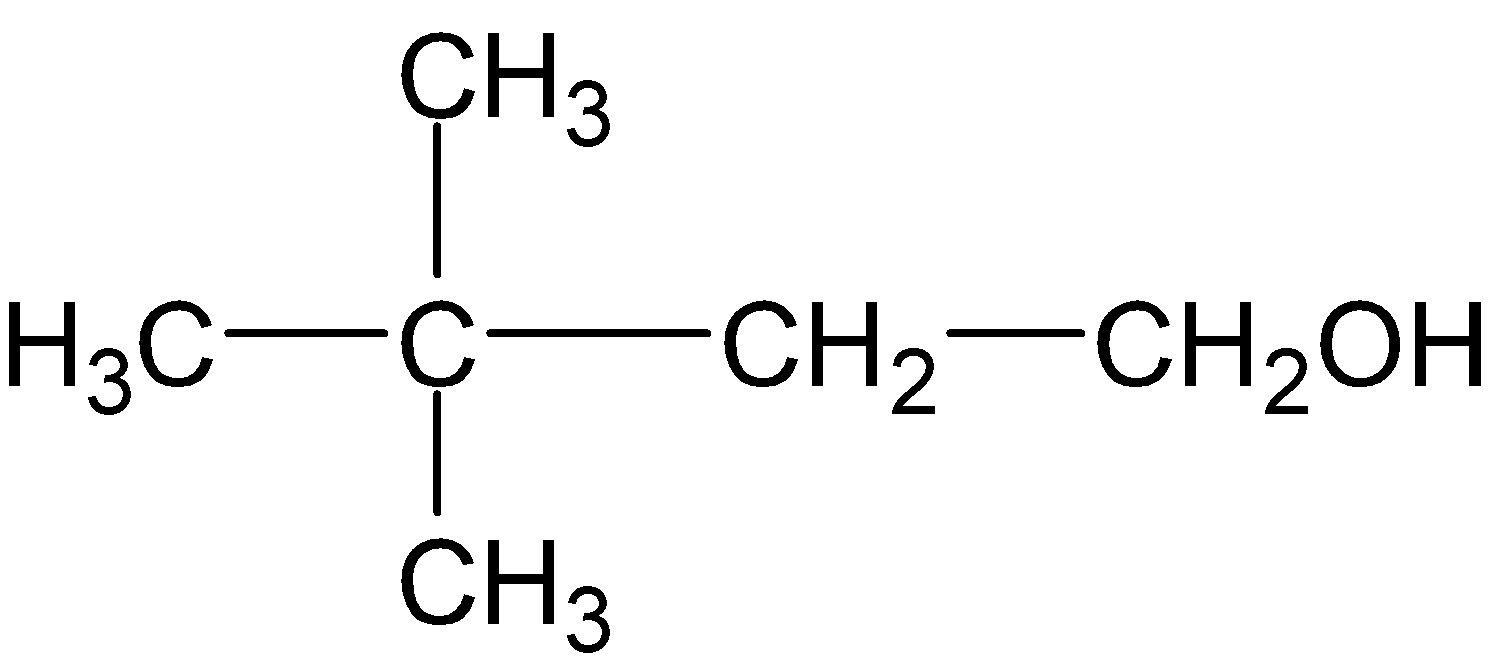
C.
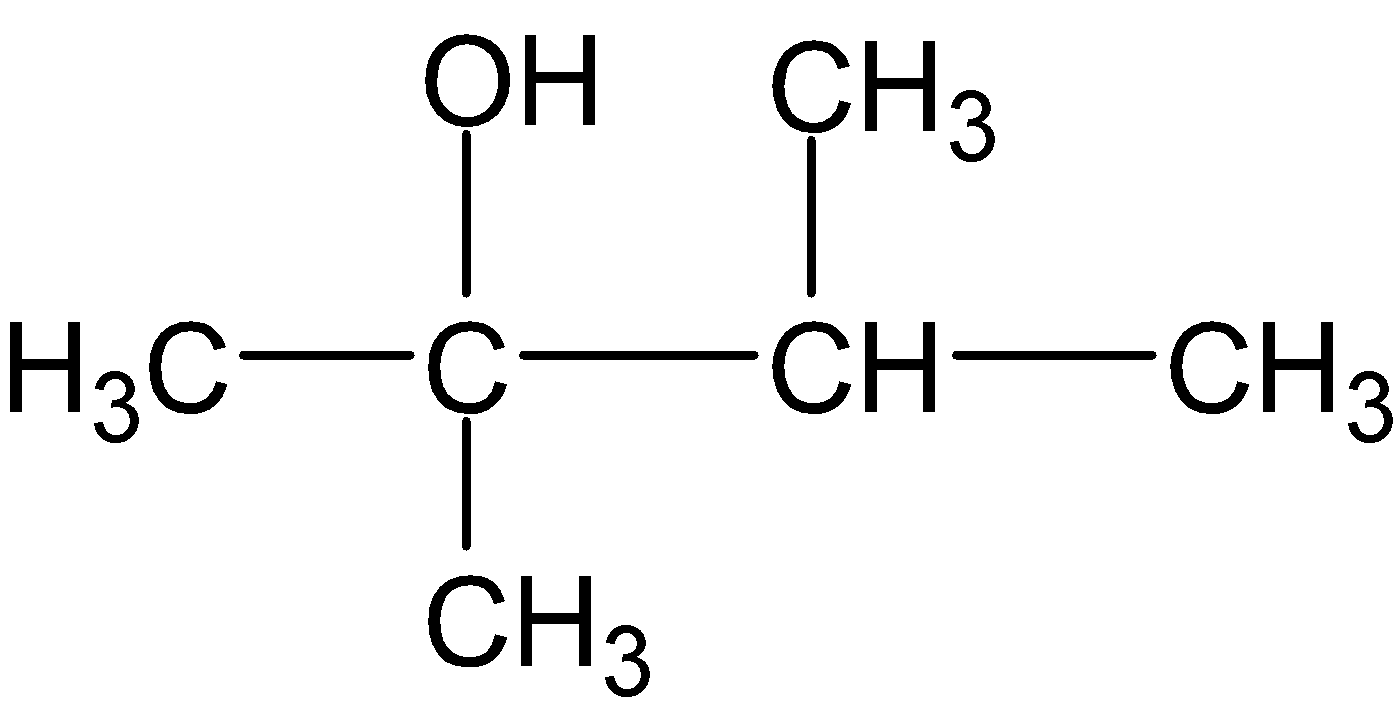
D.






Answer
348.3k+ views
Hint: The process in which alkene to alcohol is done in the presence of $Hg{{(OAc)}_{2}}$ sodium borohydride ($NaB{{H}_{4}}$) is called Oxymercuration-demercuration reaction. The major product is alcohol which is a result of the Markovnikov addition reaction.
Complete Step by Step Answer:
The oxymercuration-demercuration of alkenes provides us with an alternative pathway for the synthesis of Merkovnikov’s alcohol from any alkene. In this process, any alkene compound is treated with mercury(II) acetate $Hg{{(OAc)}_{2}}$and $NaB{{H}_{4}}$ the final product in which hydroxyl group ($-OH$) bonds to the more substituted carbon atom of the alkene compound.
The mechanism of this reaction contains more than one step. In the first step, an electrophile $HgOA{{c}^{+}}$ is generated and gives a cyclic mercurinium ion. A weakly nucleophilic water attacks on the most substituted carbon to open the three-membered cyclic mercurinium ion bridge followed by proton transfer to a solvent water molecule. The reason behind attacking more substituted carbon centres than the primary carbon centre is that the partial positive charge is better accommodated on tertiary carbon than on primary carbon.
Mechanism:
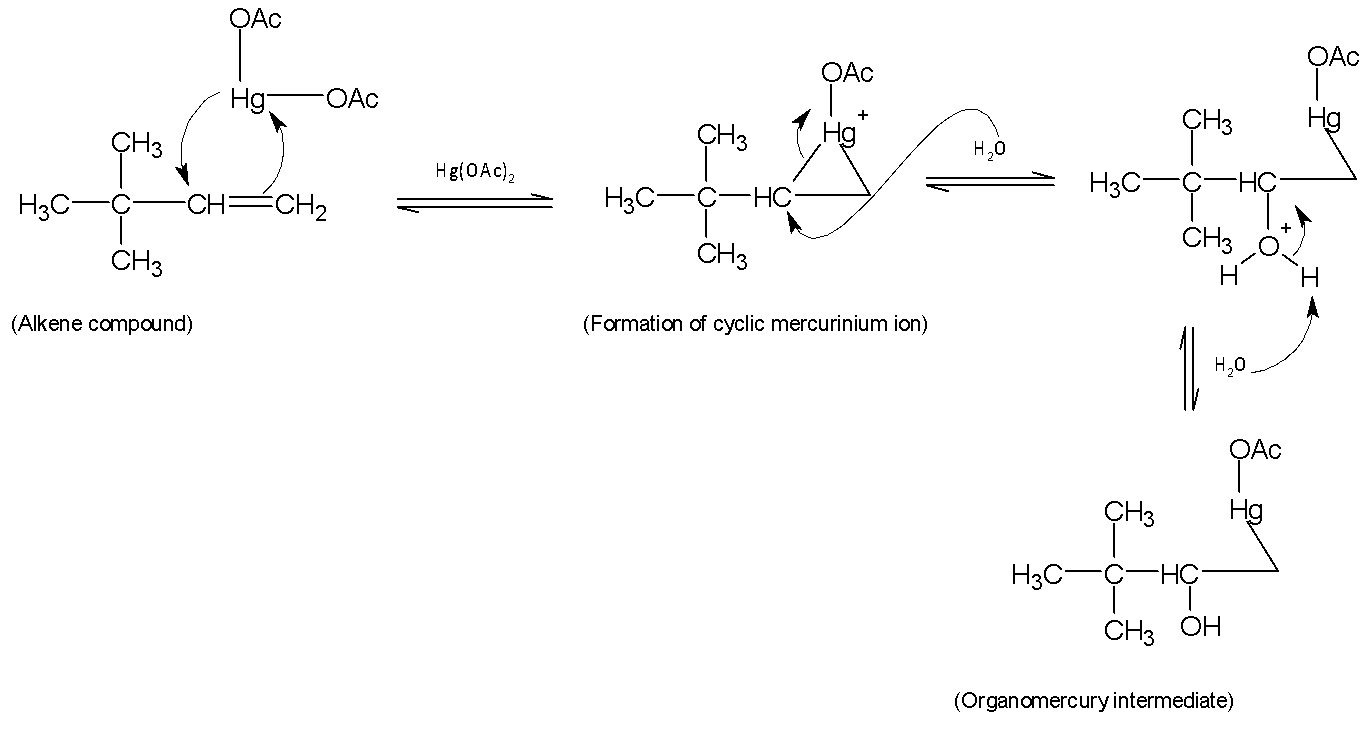
Finally, the organomercury intermediate is further reduced by sodium borohydride $(NaB{{H}_{4}})$ via hydride shift. Hence the major product is $3,3-dimethylbutan-2-ol$.
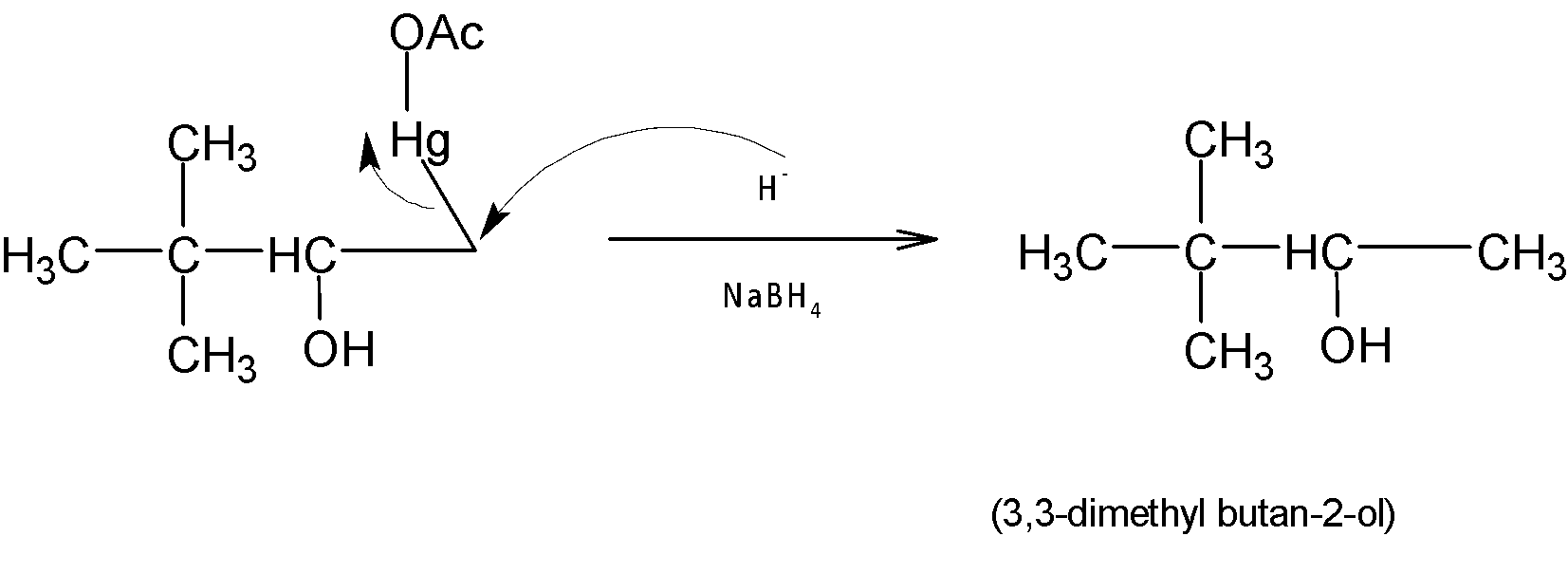
Therefore , option (A) is correct.
Note: Another process for the reduction of alkene to alcohol is known as hydroboration-oxidation. This is a reduction process of alkene followed by anti-Markovnikov regioselectivity. Here hydroxyl group is attached to the less substituted carbon centre or a carbon centre with less number of hydrogens.
Complete Step by Step Answer:
The oxymercuration-demercuration of alkenes provides us with an alternative pathway for the synthesis of Merkovnikov’s alcohol from any alkene. In this process, any alkene compound is treated with mercury(II) acetate $Hg{{(OAc)}_{2}}$and $NaB{{H}_{4}}$ the final product in which hydroxyl group ($-OH$) bonds to the more substituted carbon atom of the alkene compound.
The mechanism of this reaction contains more than one step. In the first step, an electrophile $HgOA{{c}^{+}}$ is generated and gives a cyclic mercurinium ion. A weakly nucleophilic water attacks on the most substituted carbon to open the three-membered cyclic mercurinium ion bridge followed by proton transfer to a solvent water molecule. The reason behind attacking more substituted carbon centres than the primary carbon centre is that the partial positive charge is better accommodated on tertiary carbon than on primary carbon.
Mechanism:

Finally, the organomercury intermediate is further reduced by sodium borohydride $(NaB{{H}_{4}})$ via hydride shift. Hence the major product is $3,3-dimethylbutan-2-ol$.

Therefore , option (A) is correct.
Note: Another process for the reduction of alkene to alcohol is known as hydroboration-oxidation. This is a reduction process of alkene followed by anti-Markovnikov regioselectivity. Here hydroxyl group is attached to the less substituted carbon centre or a carbon centre with less number of hydrogens.
Recently Updated Pages
Master Class 11 Economics: Engaging Questions & Answers for Success

Master Class 11 English: Engaging Questions & Answers for Success

Master Class 11 Social Science: Engaging Questions & Answers for Success

Master Class 11 Biology: Engaging Questions & Answers for Success

Class 11 Question and Answer - Your Ultimate Solutions Guide

Master Class 11 Business Studies: Engaging Questions & Answers for Success

Trending doubts
What is BLO What is the full form of BLO class 8 social science CBSE

Which places in India experience sunrise first and class 9 social science CBSE

The shortest day of the year in India

What are the major means of transport Explain each class 12 social science CBSE

Which are the Top 10 Largest Countries of the World?

How many millions make a billion class 6 maths CBSE




